Master Canadian
Species Fishing
Your complete guide to targeting Canada’s most prized fish species. From Arctic Char to Walleye, discover expert techniques, prime locations, and insider secrets for successful angling adventures across the Great White North.
Fish Species
Lakes & Rivers
Provinces/Territories
Days of Fishing
Canada’s Fishing Paradise
Canada boasts some of the world’s most diverse and pristine fishing waters. From the Atlantic provinces’ saltwater treasures to British Columbia’s Pacific salmon runs, and the countless freshwater gems scattered across the vast interior, our northern waters host an incredible array of fish species that attract anglers from around the globe.
Freshwater Excellence
Over 2 million lakes and countless rivers provide habitat for world-class freshwater species including Walleye, Northern Pike, Trout, and Bass.
Saltwater Adventures
Three ocean coastlines offer incredible saltwater fishing for Salmon, Halibut, Cod, Flounder, and many other marine species.
Year-Round Seasons
From summer open water to ice fishing adventures, Canada offers fishing opportunities throughout all four seasons.
Popular Canadian Fish Species
Discover the most sought-after species across Canada’s diverse aquatic environments, from pristine mountain lakes to rushing rivers and vast ocean waters.
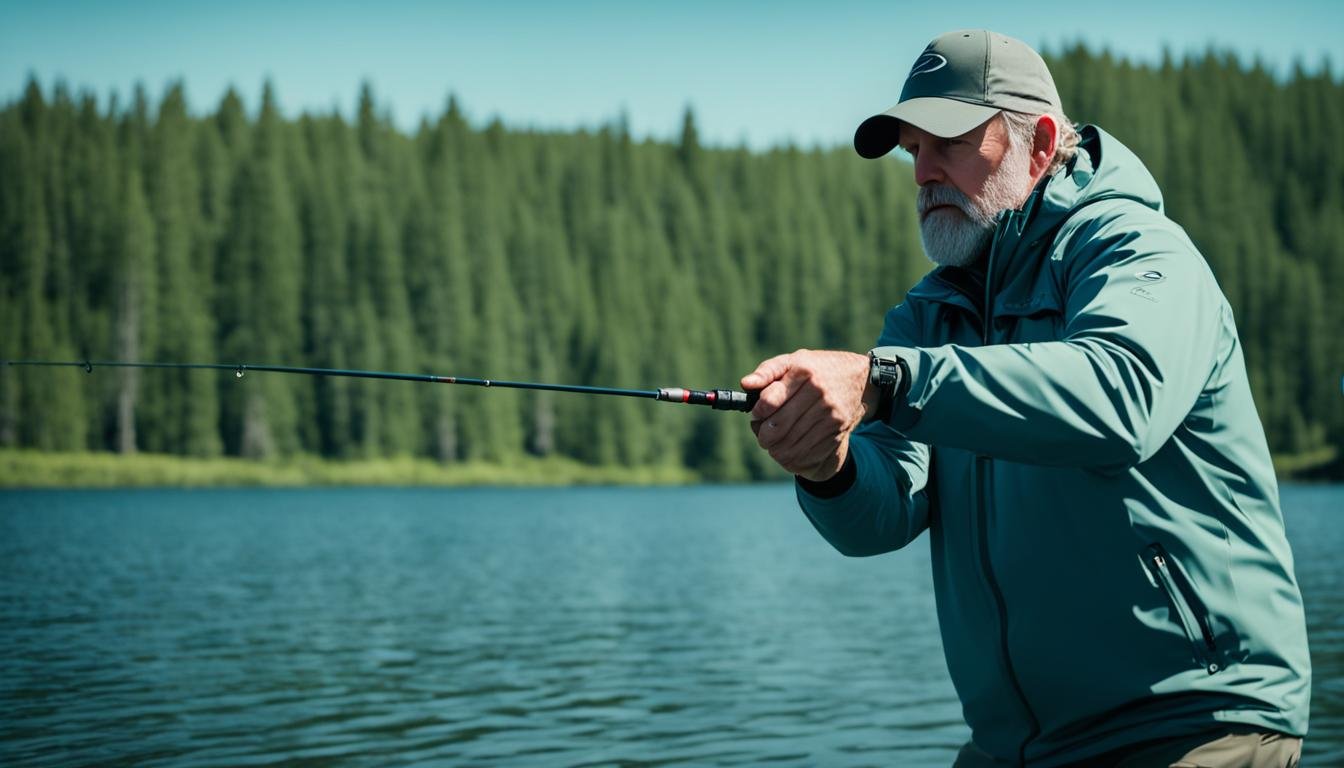
Walleye
Canada’s most beloved freshwater fish, prized for both sport and table fare. Found throughout the Great Lakes, prairie provinces, and northern territories.
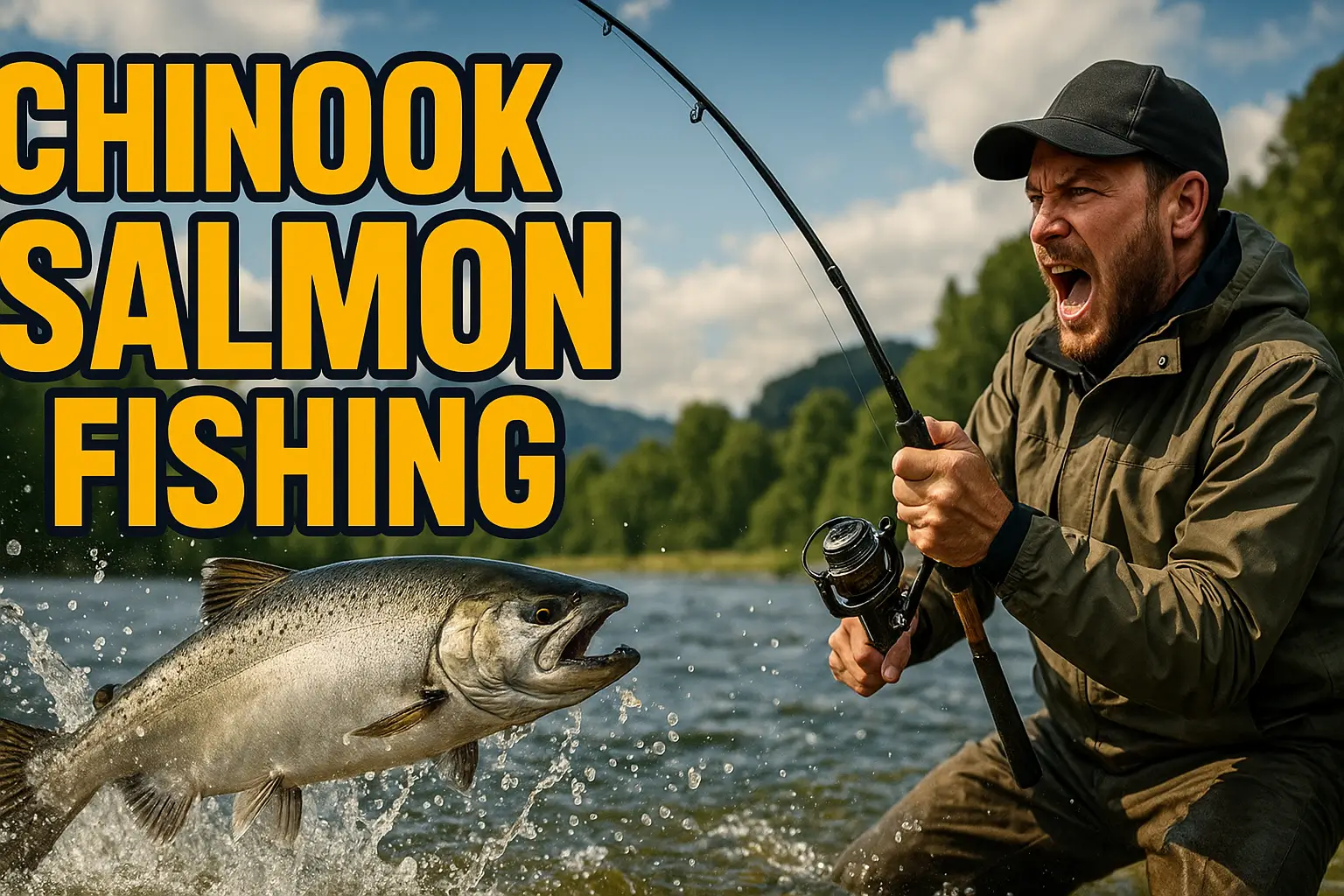
Chinook Salmon
The largest Pacific salmon species, offering world-class sport fishing along British Columbia’s coast and major river systems.
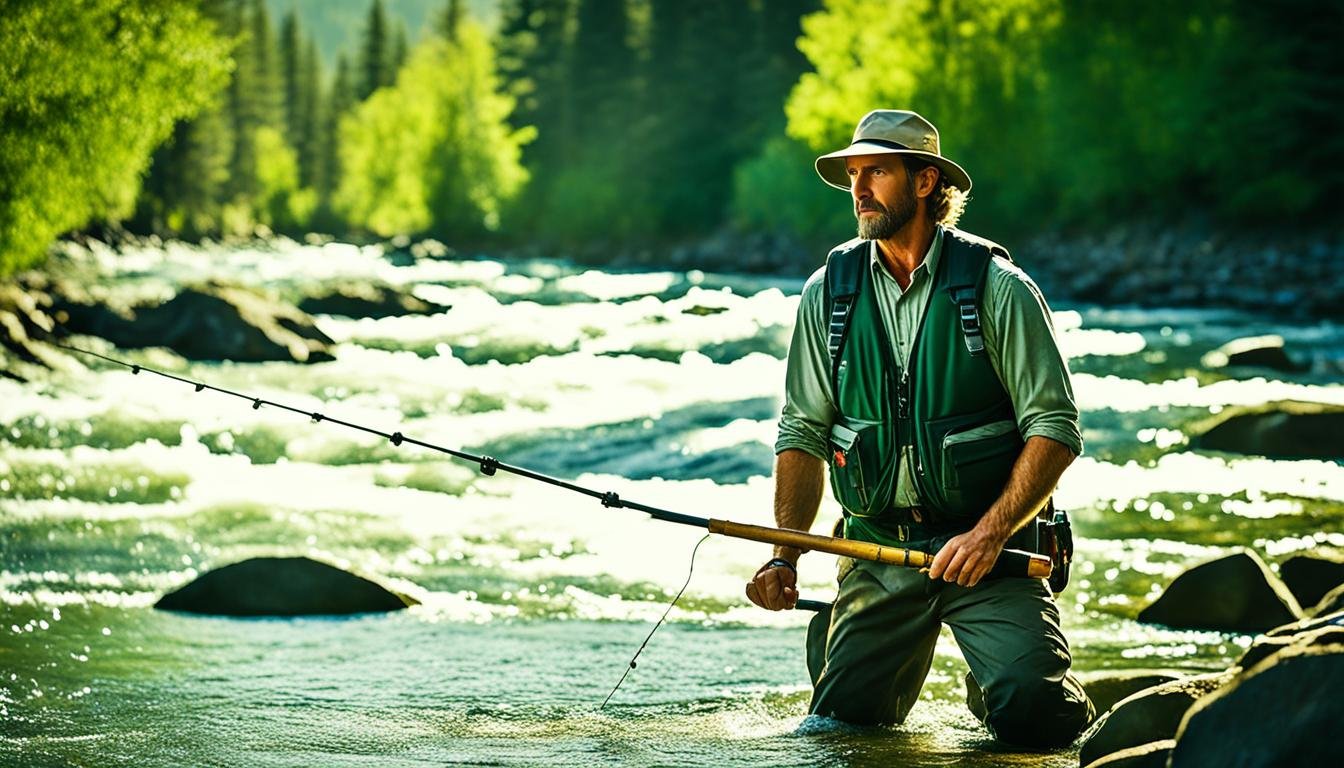
Northern Pike
Aggressive freshwater predators found in northern waters across Canada, known for explosive strikes and acrobatic fights.
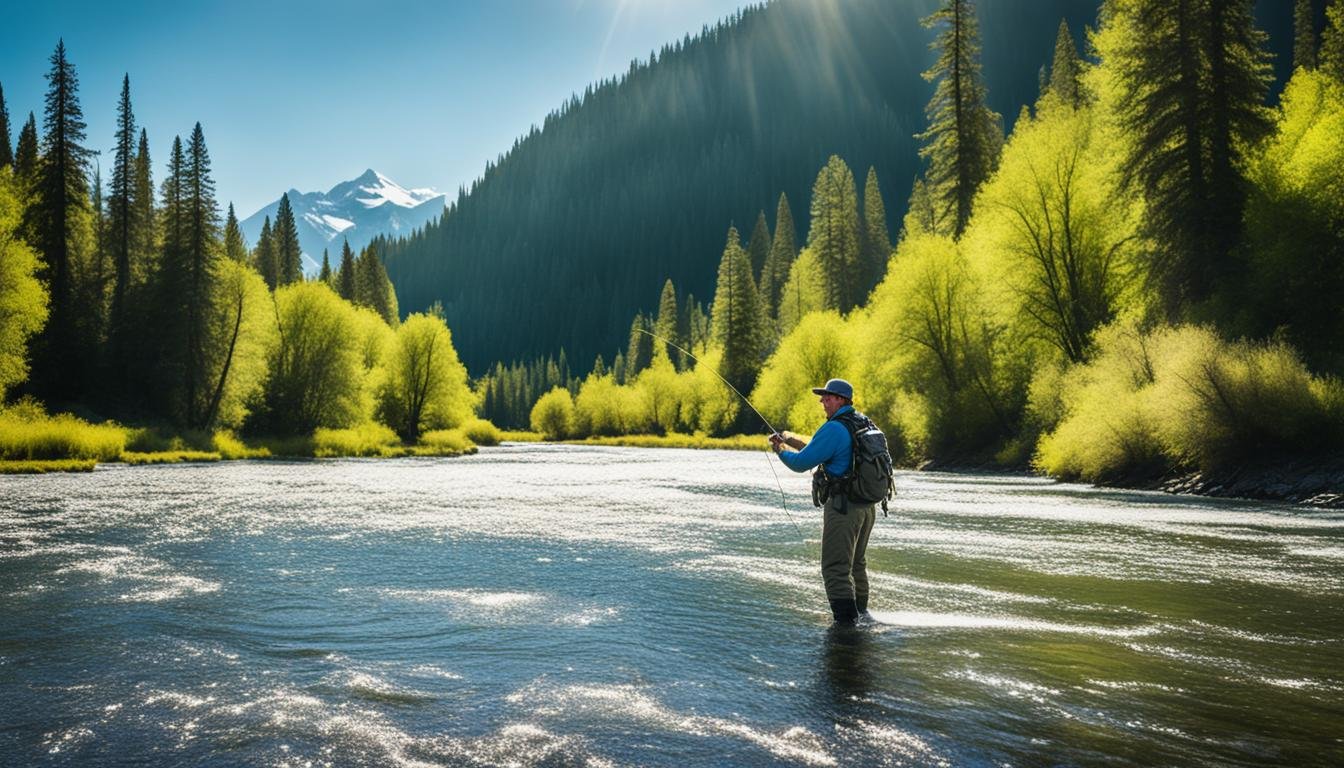
Rainbow Trout
Beautiful and hard-fighting trout found in cold, clean waters across Canada. A favorite among fly fishing enthusiasts.

Smallmouth Bass
Pound-for-pound one of the strongest freshwater fish, offering incredible sport in Canada’s rocky lakes and rivers.
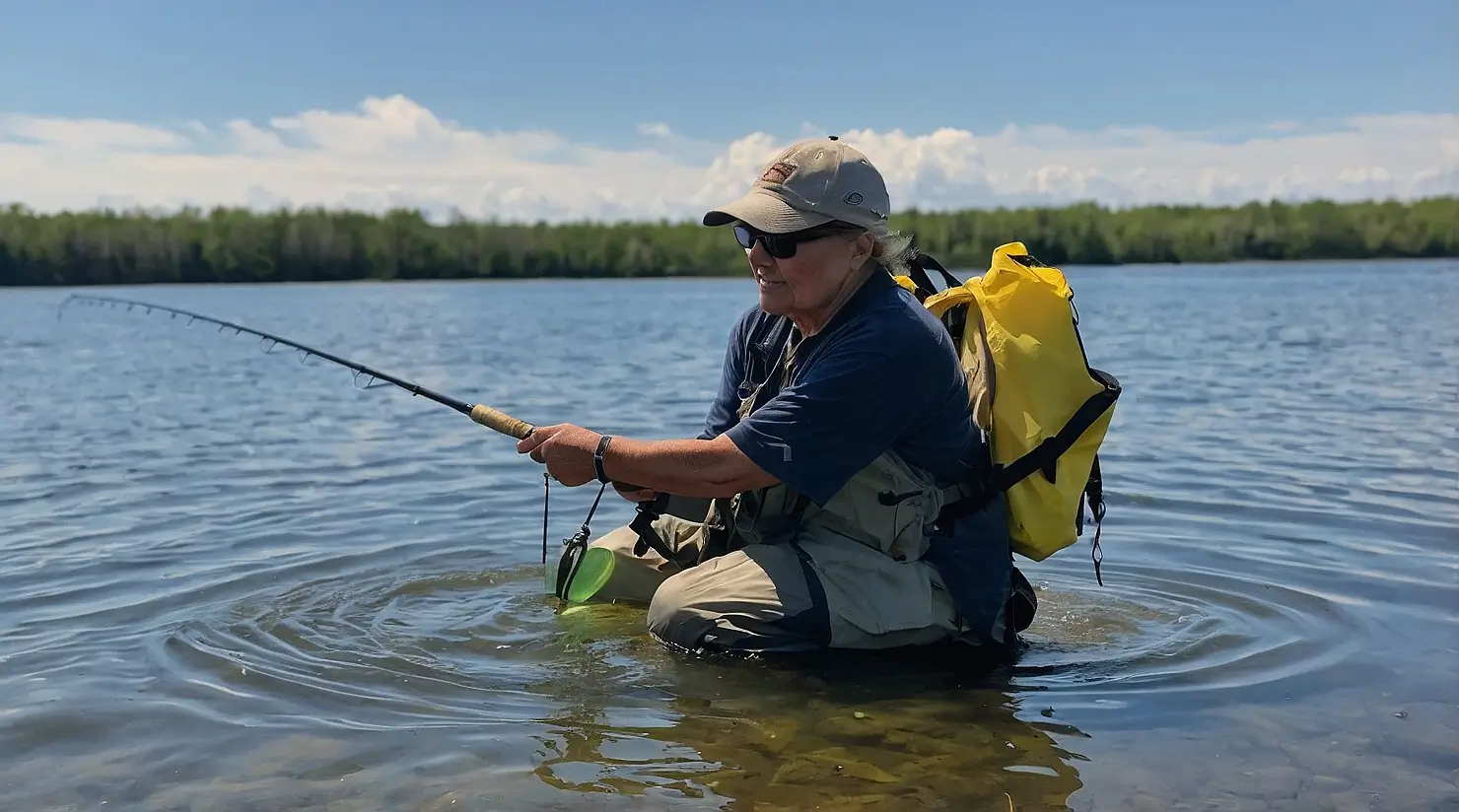
Flounder
Unique flatfish found along both Atlantic and Pacific coasts, excellent for both sport and table fare.
More Canadian Species
Muskellunge
Trophy Hunter
Lake Trout
Deep Water
Arctic Char
Northern Beauty
Atlantic Cod
Saltwater Classic
Steelhead
Sea-run Rainbow
Grayling
Sail Fin
Master Fishing Techniques
Learn the specialized techniques that separate successful anglers from the rest. Each species requires unique approaches, timing, and presentation methods.
Fly Fishing Mastery
The art of presenting artificial flies to selective fish species
Dry Fly Techniques
Surface presentations for trout, grayling, and salmon
Nymph & Streamer Fishing
Subsurface techniques for deeper presentations
Saltwater Fly Fishing
Targeting salmon, steelhead, and coastal species
Spinning & Casting
Versatile techniques for targeting multiple species
Lure Selection
Choosing the right spoons, spinners, and jigs
Trolling Methods
Covering water for lake trout and salmon
Jigging Techniques
Vertical presentations for walleye and perch
Prime Fishing Destinations
Discover Canada’s top fishing destinations, from world-renowned trophy waters to hidden gems known only to locals.
Canada’s Fishing Regions
British Columbia
Salmon, Steelhead, Trout
Prairie Provinces
Walleye, Pike, Trout
Central Canada
Bass, Muskie, Walleye
Atlantic Provinces
Salmon, Cod, Flounder
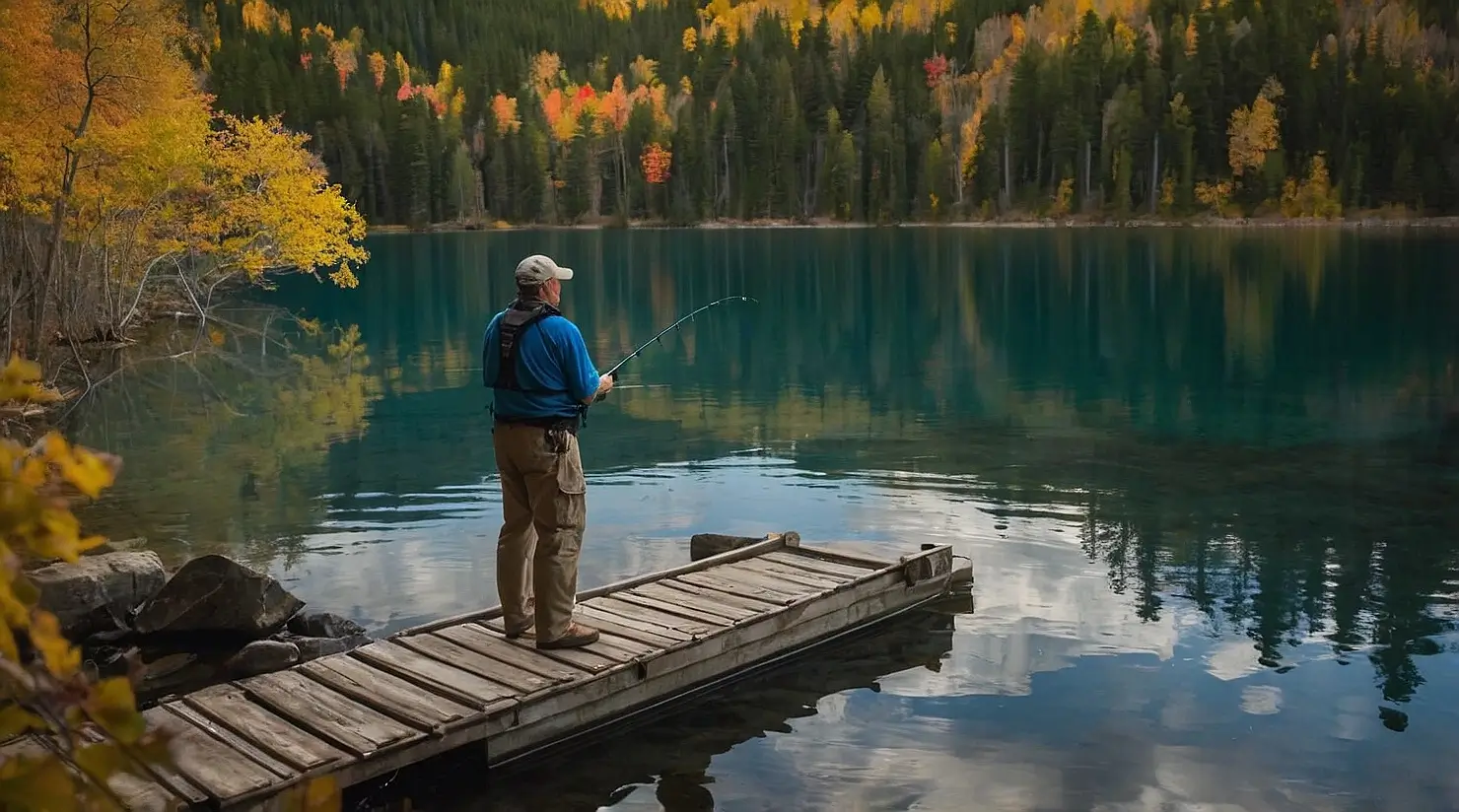
Great Lakes Region
The world’s largest freshwater system offers incredible diversity, from massive lake trout in Superior to trophy muskellunge in the St. Lawrence River.
Prime Species:
- • Lake Trout
- • Muskellunge
- • Walleye
- • Smallmouth Bass
Best Season:
May – October
Techniques:
Trolling, Jigging

British Columbia Rivers
World-class salmon and steelhead fishing in pristine mountain watersheds, offering both fly fishing and conventional angling opportunities.
Prime Species:
- • Chinook Salmon
- • Steelhead
- • Coho Salmon
- • Rainbow Trout
Best Season:
June – October
Techniques:
Fly Fishing, Drift
More Trophy Destinations
Bow River, Alberta
World-famous rainbow trout fishery
Trophy TroutFrench River, Ontario
Renowned for muskellunge and bass
Muskie HeavenMiramichi River, NB
Premier Atlantic salmon destination
King SalmonYear-Round Fishing Calendar
Understanding seasonal patterns is crucial for targeting specific species. Each season offers unique opportunities and challenges.
Spring
March – May
Prime Species:
- • Steelhead (Peak runs)
- • Rainbow Trout
- • Walleye (Pre-spawn)
- • Northern Pike
Key Tips:
- • Target shallow warming bays
- • Fish spawning tributaries
- • Use bright lures
Summer
June – August
Prime Species:
- • Salmon (All species)
- • Smallmouth Bass
- • Muskellunge
- • Lake Trout
Key Tips:
- • Early morning fishing
- • Target deeper structure
- • Use thermoclines
Fall
September – November
Prime Species:
- • Salmon (Spawning runs)
- • Walleye (Fall feeding)
- • Lake Trout
- • Northern Pike
Key Tips:
- • Target feeding areas
- • Fish river mouths
- • Use larger baits
Winter
December – February
Prime Species:
- • Lake Trout (Ice fishing)
- • Walleye
- • Northern Pike
- • Yellow Perch
Key Tips:
- • Ice fishing techniques
- • Slower presentations
- • Target deeper water
Monthly Species Activity Guide
January – March
Ice fishing season at its peak
- • Lake Trout through ice
- • Walleye in deeper holes
- • Pike near structure
- • Perch schools
April – June
Spring spawning period
- • Steelhead runs
- • Pike spawning aggression
- • Bass moving shallow
- • Trout active
July – September
Peak summer fishing
- • Salmon runs begin
- • Bass at their best
- • Deep water species
- • Muskie season
Essential Gear by Species
Success in species-specific fishing requires the right equipment. Learn what gear works best for each target species.
Rods & Reels
Walleye Setup:
Medium-light spinning rod, 6-7 feet, with sensitive tip
Salmon Setup:
Medium-heavy to heavy rod, 8-10 feet, level wind reel
Bass Setup:
Medium power rod, 6.5-7 feet, baitcasting reel
Lures & Baits
Pike Lures:
Large spoons, spinnerbaits, jerkbaits, live bait
Trout Flies:
Dry flies, nymphs, streamers, match the hatch
Walleye Jigs:
1/4 to 1/2 oz jigs, live bait, crankbaits
Essential Accessories
Must-Have Items:
- • Landing nets by species size
- • Sharp fillet knives
- • Tackle boxes & storage
- • Fish finders & GPS
Safety Gear:
- • Personal flotation devices
- • First aid kits
- • Weather protection
Species-Specific Gear Recommendations
| Species | Rod Length | Rod Power | Line Weight | Best Lures |
|---|---|---|---|---|
| Walleye | 6-7 ft | Medium-Light | 8-12 lb | Jigs, Crankbaits |
| Salmon | 8-10 ft | Medium-Heavy | 15-25 lb | Spoons, Plugs |
| Bass | 6.5-7 ft | Medium | 10-15 lb | Soft Plastics, Topwater |
| Northern Pike | 7-8 ft | Medium-Heavy | 15-20 lb | Large Spoons, Jerkbaits |
| Trout | 8-9 ft (Fly) | Light-Medium | 4-8 lb | Flies, Small Spinners |
Fishing Regulations & Licenses
Understanding and following fishing regulations is crucial for conservation and legal compliance. Each province has specific rules for different species.
License Requirements
Provincial Licenses:
Required for fishing in freshwater within each province/territory
- • Annual, multi-day, or single-day options
- • Resident vs. non-resident pricing
- • Conservation vs. sport licenses
Federal Licenses:
Required for saltwater fishing in tidal waters
- • Pacific Salmon Conservation Stamp
- • Atlantic Salmon tags (where applicable)
- • National Parks fishing permits
Conservation Rules
Key Regulations:
- • Bag Limits: Maximum number of fish you can keep
- • Size Limits: Minimum and maximum size restrictions
- • Seasons: When fishing is allowed for each species
- • Sanctuary Areas: Protected zones where fishing is prohibited
Best Practices:
- • Catch and release when possible
- • Use barbless hooks
- • Handle fish with wet hands
- • Follow possession limits
Important Reminders
- • Always check current regulations before fishing – rules change annually
- • Carry your fishing license and ID while fishing
- • Some waters require special permits beyond basic licenses
- • Indigenous fishing rights may apply in certain areas
- • Penalties for violations can include fines, license suspension, and equipment seizure
Pro Tips for Species Success
Learn from experienced Canadian anglers and guides. These insider tips can make the difference between a good day and a great day on the water.
Walleye Wisdom
“Fish the edges of structure during low light conditions. Walleye are most active at dawn, dusk, and overcast days.”
Salmon Secrets
“Match your lure size to the baitfish present. Use bright colors in murky water, natural colors in clear water.”
Bass Behavior
“Target rocky shorelines and drop-offs in spring. Smallmouth bass love structure and move shallow for spawning.”
Pike Patterns
“Fish weed edges and use wire leaders. Pike are ambush predators – work lures erratically to trigger strikes.”
Trout Tactics
“Study insect hatches and match your flies accordingly. Present your fly naturally – no drag on the line.”
Timing is Everything
“Weather changes trigger feeding. Fish before fronts move in – barometric pressure drops make fish more active.”
Advanced Strategies
Take your fishing to the next level with these advanced techniques used by tournament anglers and professional guides.
Reading Water
- • Learn to identify structure using sonar
- • Understand thermoclines and oxygen levels
- • Read current breaks and eddies
- • Spot feeding birds and baitfish activity
Presentation Mastery
- • Vary retrieve speeds and patterns
- • Use scent attractants strategically
- • Master the art of finesse fishing
- • Time your fishing with moon phases
Weather Wisdom for Anglers
Understand how weather patterns impact fish behavior across Canadian waters, and learn to adjust your techniques accordingly.
Barometric Pressure Patterns
Fish are highly sensitive to changes in barometric pressure, which affects their feeding behavior and depth preferences across Canada’s diverse water bodies.
Falling Pressure
Before storms or weather fronts
- • Most productive fishing period – fish feed aggressively
- • Fish move to shallower waters to feed
- • Best for topwater lures and shallow presentations
- • Prime time for species like pike, bass, and walleye
- • Lasts 12-24 hours before the weather change
Rising Pressure
After storms or clearing weather
- • Fish become less active and more difficult to catch
- • Move to deeper waters or seek cover
- • Use slower presentations and smaller lures
- • Focus on structure and deeper drop-offs
- • Best for patient anglers targeting specific species
Regional Weather Considerations
In Western Canada, rapidly changing mountain weather creates more dramatic pressure swings than the more stable conditions of Eastern Canada. Adjust your expectations accordingly – western waters often see more pronounced feeding windows.
Weather Tools for Anglers
Essential resources to track conditions that impact your fishing success across Canada.
Barometer Apps
FishWeather, WeatherX, and Barometer Pro provide precise pressure readings and trend analysis specific to fishing.
Water Temperature Guides
Each species has optimal temperature ranges. Use a water thermometer to match conditions to species preferences.
Moon Phase Calendars
Solunar theory indicates peak feeding times around new and full moons, especially for salmon and trout.
Regional Weather Patterns
Understand local patterns – Pacific Northwest rain vs. Prairie thunderstorms vs. Atlantic coastal fog.
Weather-Specific Techniques
Sunny & Clear
Fish deeper waters or shaded areas. Use natural-colored lures and lighter lines.
Cloudy & Overcast
Fish move shallower. Bright lures and topwater presentations work well.
Rain & Drizzle
Excellent surface activity. Use noisy topwater lures to capitalize on reduced visibility.
Wind Conditions
Focus on windward shores where bait is concentrated. Use heavier tackle to maintain bottom contact.
Temperature Swings
Sudden cold snaps slow fish activity; warming trends increase feeding. Adjust retrieve speeds accordingly.
Species-Specific Weather Responses
Different fish react uniquely to weather changes across Canada’s diverse ecosystems.
Salmon
- • Most active during overcast days with moderate currents
- • Avoid bright sunny days in clear water systems
- • Prime feeding during incoming tides with cloud cover
- • Fall salmon runs accelerate with early cold snaps
Trout
- • Feed throughout day in overcast conditions
- • Move shallow during low-light periods
- • Avoid warm water temperatures above 68°F (20°C)
- • Most active during spring snowmelt and fall cooling
Pike
- • Aggressive in most weather conditions
- • Best during low-pressure systems before storms
- • Target shallow bays during warming trends
- • Ice fishing peaks during stable high-pressure periods
Walleye
- • Peak activity during low-light conditions
- • Most responsive to weather changes
- • Feed aggressively before pressure drops
- • Move deeper during bright sunny days
Pro Tip: Keep a fishing journal noting weather conditions and success rates. Over time, you’ll identify patterns specific to your favorite Canadian waters that go beyond general guidelines.
Smart Fishing Technology
Harness the power of modern technology to enhance your fishing experience and increase your success on Canada’s waters.
Fish Finding Technology
Modern electronics have revolutionized how we locate and target fish across Canada’s diverse water systems. Here’s what you need to know:
Sonar Systems
Traditional and CHIRP sonar provide detailed underwater structure views and fish arches.
- • Best for: Deep water lakes, river channels, and offshore fishing
- • Top Brands: Garmin, Lowrance, Humminbird
- • Canadian Tip: Use lower frequencies (50-80 kHz) for deep Canadian lakes over 100 feet
Side Imaging
Creates photographic-quality images of underwater structures to both sides of your boat.
- • Best for: Structure fishing, weed line identification, and locating schools
- • Coverage: Up to 200 feet per side depending on water conditions
- • Canadian Tip: Essential for finding deep structure in Canada’s vast northern lakes
Down Imaging
Provides ultra-clear, near-photographic views directly beneath your boat.
- • Best for: Precision structure work, vertical jigging, and ice fishing
- • Resolution: Can distinguish individual fish and small structure details
- • Canadian Tip: Incredibly valuable for ice fishing through the frozen surface
3D Imaging
Creates three-dimensional models of underwater environments for unparalleled visualization.
- • Best for: Complex structure, deep water, and precise presentations
- • Systems: Garmin LiveScope, Lowrance ActiveTarget
- • Canadian Tip: Game-changer for targeting suspended fish in deep Canadian lakes
Technology by Canadian Water Type
Not all technology performs equally across Canada’s diverse water conditions. Consider these factors:
- • Clear Western Waters: Down imaging excels in BC and Alberta’s clear lakes
- • Stained Eastern Waters: Traditional sonar often outperforms imaging in Ontario and Quebec’s stained waters
- • Northern Lakes: Higher power systems needed for deep, cold northern lakes
- • River Systems: Forward-facing sonar is invaluable for moving water
Essential Fishing Apps
Maximize your time on the water with these technology tools designed specifically for Canadian anglers.
Fishidy Canada
Crowdsourced fishing reports specific to Canadian waters with ice thickness data during winter months.
Navionics Boating Canada
Detailed Canadian lake maps with community-sourced hotspots and real-time water temperature layers.
Solunar Canada
Customized solunar tables accounting for Canadian latitude variations and daylight patterns.
FishWeather Canada
Hyperlocal weather forecasts with barometric pressure trends specific to fishing success.
Fish Don’t Live Here
Augmented reality app that helps identify non-productive water using your phone’s camera.
Technology on a Budget
Entry-Level Options
You don’t need to break the bank to benefit from fishing technology:
- • Smartphone mounts for using free fishing apps
- • Budget fish finders under $200 with basic sonar
- • Community-shared lake maps through fishing forums
- • Free weather apps with fishing-specific features
Mid-Range Investments
Worthwhile upgrades for serious anglers:
- • All-in-one units with GPS and basic imaging ($400-800)
- • Waterproof Bluetooth speakers for underwater sound monitoring
- • Digital depth finders for shore anglers
- • Portable sonar devices that connect to smartphones
Pro-Level Systems
For those targeting trophy fish consistently:
- • Multi-spectrum imaging systems with 3D capabilities
- • Forward-scanning sonar for real-time fish tracking
- • Networked systems connecting multiple displays
- • Ice fishing-specific imaging for winter applications
Pro Tip: Many Canadian provincial parks now offer fish finder rentals at reasonable rates. Check with local marinas and park offices before making a significant investment.
Technology Integration Guide
How to effectively incorporate technology into your fishing approach without losing the traditional experience.
The Technology Balance
Technology should enhance, not replace, fundamental fishing skills. Use these guidelines to maintain the right balance:
- • Use technology to confirm what you’re already observing (water temperature, structure, etc.)
- • Don’t rely solely on electronics – develop your ability to read water conditions
- • Practice fishing without technology periodically to maintain traditional skills
- • Teach beginners without technology first, then introduce electronics as supplemental tools
Species-Specific Technology Use
Different fish require different technological approaches across Canada:
Salmon: Focus on temperature layers and current breaks. Use side imaging to locate schools in open water.
Trout: Down imaging is critical for spotting trout in clear water. Look for subtle structure changes.
Pike: Use traditional sonar for shallow weed edges. Forward-facing sonar helps target specific ambush points.
Walleye: CHIRP sonar with high resolution is essential for locating walleye on drop-offs and points.
Digital Logbook Benefits
Track your fishing success with digital tools to identify patterns and improve future trips:
- Record water temperature, weather conditions, and success rates by location
- Build a personal database of productive lures and techniques
- Compare current conditions to historical success patterns
- Share data with fishing partners while maintaining privacy controls
Recommended Tools: LogMyFishing, Fishidy Journal, or even a customized Google Sheets template with location mapping
Technology Ethics & Regulations
Be aware of technology-related regulations across Canadian waters:
Sonar Restrictions: Some Canadian parks limit transducer power or prohibit certain imaging technologies
GPS Marking: Avoid marking and sharing exact locations of sensitive spawning areas or protected habitats
Appropriate Use: Technology should help you fish more effectively, not give you an unfair advantage over conservation principles
Data Sharing: Be mindful of sharing real-time location data that could lead to overfishing of specific spots
Remember: The goal is sustainable fishing practices that preserve Canada’s incredible fisheries for future generations, with technology as a tool rather than the focus.
Frequently Asked Questions
Get answers to the most common questions about fishing for specific species in Canada.
Walleye is consistently ranked as Canada’s most popular sport fish, followed closely by Northern Pike, various Trout species, and Salmon. The popularity varies by region – Salmon dominate in British Columbia and Atlantic Canada, while Walleye and Pike are favorites in the prairie provinces and Ontario. Bass fishing is extremely popular in southern Ontario and Quebec.
Generally, a single recreational fishing license covers multiple species within a province. However, some species require additional tags or stamps – like the Pacific Salmon Conservation Stamp in BC or Atlantic Salmon tags in some Atlantic provinces. National Parks require separate permits. Always check specific regulations as they vary by province and water body.
Timing varies by species: Walleye are excellent in spring (pre-spawn) and fall; Salmon runs peak in late summer/early fall; Bass fishing is best from late spring through early fall; Pike are active in spring and fall; Trout fishing is typically best in spring and fall when water temperatures are optimal. Ice fishing extends the season for many species through winter.
Canada offers world-class fly fishing opportunities: British Columbia’s rivers are renowned for Salmon and Steelhead; Alberta’s Bow River is famous for Rainbow Trout; Ontario and Quebec have excellent Brook Trout waters; the Maritimes offer Atlantic Salmon fishing; Northern territories provide Arctic Char and Grayling opportunities. Each region offers unique fly fishing experiences.
Start with local fishing guides or charters who specialize in your target species. Join local fishing clubs and online communities. Take advantage of provincial learn-to-fish programs. Practice catch-and-release to gain experience. Read species-specific articles and watch instructional videos. Start with easier species like Walleye or Trout before targeting more challenging fish like Muskellunge or Salmon.
Invest in quality rods and reels suited to your target species. A medium-light spinning setup works for most freshwater species. Add a medium-heavy setup for larger fish like Pike and Salmon. Essential accessories include a good tackle box, landing net, pliers, and fillet knife. For fly fishing, start with a 5-6 weight outfit. Quality matters more than quantity – buy fewer, better pieces of equipment.
Complete Resource Library
Dive deeper into species-specific fishing with our comprehensive collection of guides, tutorials, and expert resources.
Technique Guides
- • Advanced fly fishing techniques
- • Trolling strategies for salmon
- • Ice fishing for lake trout
- • Jigging for walleye
Location Guides
- • Best fishing spots by province
- • Hidden gem locations
- • Access points and boat launches
- • Seasonal hotspots
Equipment Reviews
- • Rod and reel recommendations
- • Lure effectiveness tests
- • Gear comparison guides
- • Budget vs premium options
Regulations
- • Provincial fishing regulations
- • License requirements
- • Season dates and limits
- • Conservation guidelines
Seasonal Guides
- • Spring fishing strategies
- • Summer deep water tactics
- • Fall feeding patterns
- • Ice fishing techniques
Guides & Charters
- • Professional guide directory
- • Charter boat services
- • Guided trip packages
- • Lodge recommendations
Ready to Catch Your Trophy?
Transform your fishing adventures with expert knowledge, proven techniques, and insider secrets. Join thousands of successful anglers who’ve mastered Canadian waters.